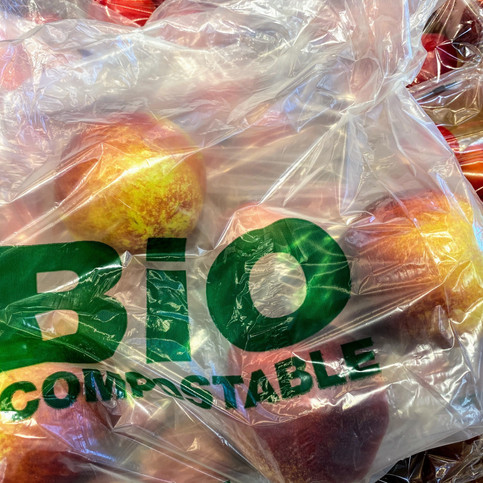Biogas is a renewable fuel produced by the breakdown of organic matter such as food scraps and animal waste. It can be used in a variety of ways, including as vehicle fuel and for heating and electricity generation. Biogas production techniques vary according to the type of biomass being used, with different processes suited to certain types of feedstock.
Biogas is a promising alternative fuel that offers numerous environmental, economic, and social benefits. In countries such as the United States and China, the use of biogas is gaining popularity, thanks to supportive government policies. As we move towards a low-carbon future, it is clear that biogas will play an important role in our transition to cleaner forms of energy.
Anaerobic Digestion
Biogas is produced through a process known as anaerobic digestion. This involves the breakdown of organic material by bacteria, fungi and other organisms in the absence of oxygen. Anaerobic digestion can also be carried out using liquids, such as for example effluent from sewage treatment or food processing plants.
The type of feedstock used will determine the type of anaerobic digestion process employed. For example, solid biomass such as manure can be processed using a technique known as dry digestion, while liquid feedstocks require the use of wet digestion.
The end product of anaerobic digestion is biogas, which is composed of methane (CH4) and carbon dioxide (CO2). This gas can be used in a variety of ways, including for the generation of electricity, as a vehicle fuel or for heating purposes.
Energy Generation
The production of biogas has a number of environmental benefits. The process provides heat and electricity for on-site use at food or livestock production facilities, can reduce landfilling activities and produce valuable fertilizer. Biogas is also considered a renewable energy source as it is produced from organic matter that can be renewed on a continuous basis.
When used for energy generation, biogas can be combusted in a gas engine to produce electricity and heat. Alternatively, the gas can be upgraded to natural gas quality and injected into the existing natural gas grid.
Vehicle Fuel
Another way in which biogas can be used is as a vehicle fuel. When used in this way, the gas is typically processed to remove impurities such as CO2 and water vapor. The resulting ‘biomethane’ can then be used in a compressed natural gas (CNG) vehicle or converted into liquefied natural gas (LNG) for use in a dedicated biogas vehicle.
Heating
Biogas can also be used as a heating fuel, either by burning the gas directly or using it to power an internal combustion engine that generates heat. This process is known as cogeneration and provides an alternative to conventional forms of heating such as oil and natural gas.

Carbon Credits
In order to encourage the use of biogas as an energy source, policies such as carbon credits can be employed. These involve the issuing of tradable permits that give producers access to incentives such as tax breaks or subsidies. By promoting the production and use of biogas, these policies help to incentivize more environmentally-friendly ways of generating energy.
Biogas is classified as a carbon-neutral technology due to its ability to absorb and sequester carbon during the degradation process. This means that companies producing or using biogas can receive carbon credits for their efforts, which can provide valuable financial benefits.
Voluntary Carbon Market
In the voluntary carbon market, a number of projects generate carbon offsets through the use of biogas. These projects typically involve the collection and processing of methane-rich waste, such as manure, that would otherwise be emitted into the atmosphere. The resulting biogas is then used to generate electricity or heat, with the carbon dioxide produced being captured and stored.
The voluntary carbon market provides a way for companies and individuals to offset their emissions by investing in projects that reduce greenhouse gases. This can be an effective way of offsetting emissions from activities that are difficult to avoid, such as air travel.
Benefits of Biogas
The use of biogas offers a number of environmental benefits over conventional forms of energy generation. These include the production of renewable energy, the reduction of greenhouse gas emissions and the promotion of more sustainable waste management practices. Additionally, the use of biogas can generate valuable income for those involved in its production and use, making it an attractive choice for businesses.
Biogas also offers a number of benefits that make it an attractive choice for businesses and governments alike. Its use can help to reduce greenhouse gas emissions, improve air quality, and generate income for those involved in its production and use, with many governments introducing policies that support the production and consumption of this renewable fuel.
Biogas in the United States
In the United States, the use of biogas is currently gaining momentum. To support this, a number of federal and state policies have been introduced to encourage the development and use of biogas. For example, in 2005, President George W. Bush signed the Energy Policy Act into law, which provides tax credits for those involved in producing biogas from livestock manure. Additionally, the California Public Utilities Commission has introduced a number of policies to support biogas use, including incentives for installing onsite generation equipment.
Looking forward, we can expect to see more companies and governments investing in biogas projects that provide environmental, economic, and social benefits. With its diverse uses and carbon-neutral status, biogas is well-positioned to play a significant role in our transition to a low-carbon economy.
Biogas in China
In China, the use of biogas is also gaining popularity. The Chinese government has been investing heavily in biogas projects in recent years, with a particular focus on rural areas. This has led to the development of a number of large-scale facilities that generate energy from livestock manure and other organic waste.
In addition to its contribution to energy generation, biogas also has the potential to improve soil health. By capturing methane that would otherwise be released into the atmosphere and using it for energy production, farmers are able to reduce their overall greenhouse gas emissions. This can help them meet their emission reduction targets more effectively than other mitigation options.

European Union
In the European Union (EU), a number of policies have been introduced to promote the use and production of biogas. For example, the Renewable Energy Directive (2009/28/EC) requires EU member states to meet certain targets for renewable energy consumption. Additionally, the Emission Trading Scheme (ETS), an EU-wide carbon market that aims to reduce greenhouse gas emissions, provides incentives for those that reduce their emissions in other ways, including by using biogas.
Biogas in Canada
Its use in Canada is also on the rise. In 2016, the province of Ontario announced plans to introduce a number of supporting policies, including tax incentives for businesses that invest in biogas projects. This is part of an overall strategy to promote the production and use of renewable energy in the province.
Australia
In Australia, biogas use is supported by a number of policies, including the Renewable Energy Target (RET) and the Emissions Reduction Fund (ERF). The RET encourages investments in renewable energy projects, while the ERF provides financial incentives for those that reduce their emissions. As a result, many businesses are now turning to biogas as a cost-effective way to meet their renewable energy and emissions reduction targets.

